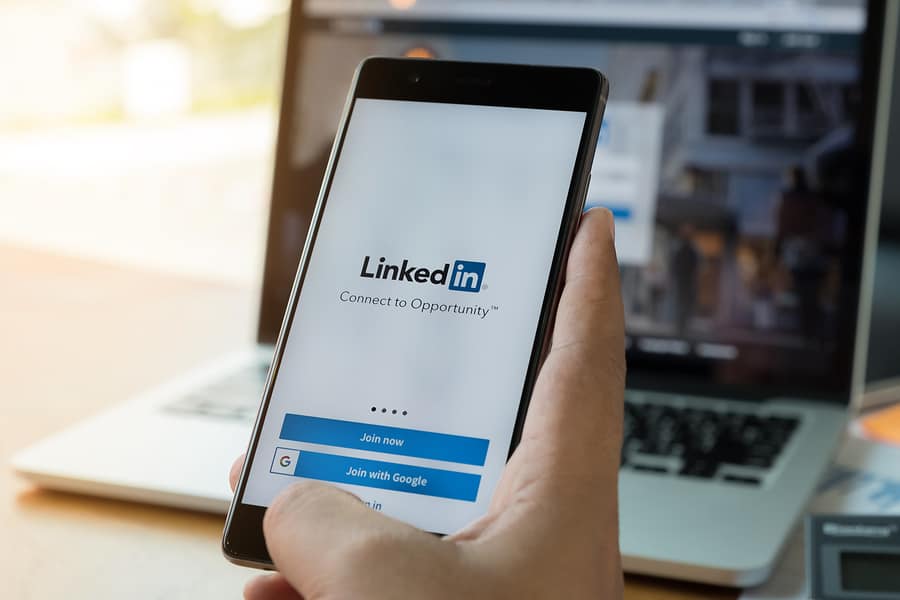Improve Your Company’s Social Presence with LinkedIn Advocates LinkedIn has been the best social media for B2B social presence for some time now, and it’s not hard to see why: LinkedIn is all about business. And building a solid following of LinkedIn Advocates is a critical step to B2B social media success. On
Improve Your Company’s Social Presence with LinkedIn Advocates

On Facebook and Instagram, you’re competing with cute cat photos and posts about friends and family, while on Twitter, your voice is just one of thousands talking about the latest news and events.
On LinkedIn, though? You’re keeping up with industry trends and listening to tips from thought leaders and innovators in your field. That’s where you want your B2B business to be heard, loud and clear.
What’s a simple way to get your LinkedIn noticed? By making your employees your biggest social advocates. Read on to learn how to do just that.
Step #1: Do a “Social Survey” with Your Staff
Everyone has a different idea of what’s acceptable behavior on social media, and everyone has different levels of experience with it. Doing a company-wide survey can give you insight on which of your employees are social media savvy, and which are barely ever online. It also helps you understand important points you’ll want to make in a company social policy (which we discuss more of below).
Step #2: Build a Company Social Policy
Social media is great when used properly, but inappropriate behavior online can be disastrous for your company. Don’t let that happen to you: create a company-wide social media policy.
You care about how your employees act on the phone and on company emails, and social media is no different. For example, Adidas allows its employees to associate themselves with the company when posting, but requires proper copyright and reference laws to be followed. Employees also must make it clear that the content they’re posting is personal and their own, rather than endorsed by the company.
Spend some time considering what you’re most concerned about, then establish a clear company policy to protect yourself. Once you’ve done that, you can begin encouraging your employees to “get social” with your company.
Step #3: Signing Up with LinkedIn
Now that we know your employees’ current social media presence and have a policy in place, let’s start with the basics. Are your employees signed up on LinkedIn yet? And if so, are they following your company?
Chances are, not everyone is. A way of improving this is by making “social media training” a part of your employee induction procedure, with a tutorial that reminds them of the company social policy and what networks your company is currently on.
Even this little addition to your following can help increase the credibility of your company’s accounts. If you have fifty employees who all “follow” your company on LinkedIn, you’re starting even a brand-new profile off with a pretty decent audience!
In other words, even stopping at this step does a lot to help your company’s LinkedIn look good. Don’t go away, though—there’s more LinkedIn potential ahead.
Step #4: “Liking” the Professional Look
Now that your employees have a LinkedIn in place, they’ll want to be aware of how to best present themselves on it. Again, taking the time to train them on this and your “best practices” for posting will make their engagement on this network more impactful.
Explain to them what content is LinkedIn-friendly and which isn’t (no hashtags!), pointing again to your policy if it states any do’s or don’ts that need special reminding. This training should include a reminder to fill out the fields on their profile and to pick a nice, professional photo to showcase.
So, why does all this matter?
In a world of bots and fake online accounts, people want to be reassured that you’re a real human being behind the screen. Having a photo boosts your credibility and makes people more willing to connect with you. If you’re a generic blank face with a forgettable name, no experience, and questionable posting history, you’ll have a tough time getting anyone to take you seriously.
Step #5: Getting Connected
Speaking of connections, start making some! If your employees are new to LinkedIn and don’t know where to begin, have their co-workers “connect” with them online.
Whether it’s friends, coworkers, or clients, it’s a good idea for anyone to start building their network on LinkedIn right away. It’s polite to give a brief message before connecting with someone that reminds them of your connection with them. And when someone connects with you, don’t forget to say, “Thank you.”
Why are we connecting with people on LinkedIn, anyway?
First, you get to keep up with the career growth of people and companies you care about. Secondly, every time someone likes, shares or comments on a LinkedIn post by your company, they’re vastly increasing its audience and reach. Even if that person is a company employee.
You’ll see a large jump in impressions any time your post gets engagement, so the wider your employee-wide network is, the larger net you cast.
Step #6: Talking the Talk
The advice we’ve mentioned so far is pretty passive. Signing up, connecting, and “liking” a post every few days has an impact, but the biggest thing you can do as an employee for your company is to be involved in your industry’s conversation. That’s why they call it “social” media!
How do you engage on LinkedIn? It depends on what you’re most comfortable with.
LinkedIn Groups
LinkedIn Groups are a good way to keep up with other people in your industry who share the same concerns and thoughts you do. You can quite literally find a group on LinkedIn about anything, from trade shows to expertise. (For example, I just typed in “Content Marketing” on LinkedIn Groups and over 1,500 search results popped up!)
Find one you like and just click “Ask to Join.” Chances are, a few of your connections are already in a group where you’d fit right in. When you’re there, you’ll be part of a larger conversation about your field where you can ask questions, share advice, and make valuable connections along the way.
LinkedIn Pulse
Fancy yourself a writer? LinkedIn Pulse is a publishing platform that puts your articles directly on LinkedIn, making them easy to find and be shared by your audience. It’s a great way of getting your name out as a thought leader in your industry. Sometimes a blog post does better on LinkedIn Pulse than it does on your website!
Write Comments
Looking for something simple? There’s nothing wrong with a good old-fashioned comment on a post that interests you. Follow and keep up with companies and publications that talk about your industry, and occasionally leave your thoughts in the comments.
As long as you are respectful, thoughtful and helpful, people will appreciate hearing from you (and some might go out of their way to connect with you and your company!).
Ready to get started on LinkedIn?
This is just a basic walkthrough on the benefits of an increased LinkedIn presence from your staff. For a more in-depth discussion on engagement and advertising opportunities, ask Dream Factory to conduct your guide to using LinkedIn to its full advantage in B2B marketing. From sponsored content to InMail, we can make social simple for your business.
Want to know how to build more LinkedIn Advocates?
We’re here to provide the strategies you need.
Learn what options are right for you.













